Chameleon cars, urine scanners and other standouts from CES 2023
AI-ovens, dual-display or 3D screen laptops and satellite SOS texting shine at Las Vegas tech show
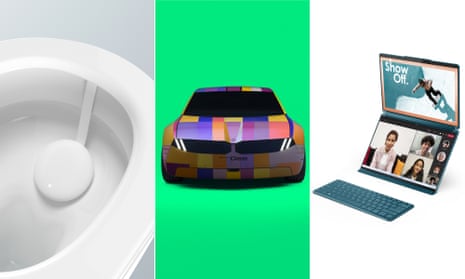
From colour-changing cars, dual-screen laptops and satellite emergency texts to AI-ovens and a urine-scanning smart toilet upgrade, the annual CES tech show in Las Vegas had more concepts of the future on show than ever before.
The biggest consumer gadget show of the year was still quieter than pre-pandemic levels, with the global economic slowdown biting big tech along with everything else.
However, there were still thousands of products on display. Here are some of the highlights.
Colour-changing concept cars
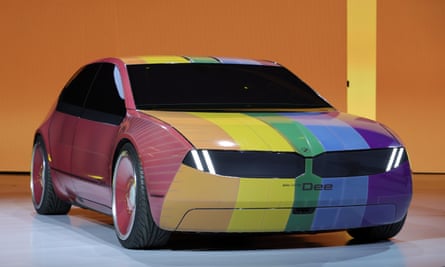
Introduced by Arnold Schwarzenegger, BMW’s i Vision Dee caught the attention with its E-ink outer skin, which can change colour in an instant. Don’t expect that on a car you can buy any time soon but it also has a head-up display projected across the full width of the windscreen, which will be available from 2025.
Sony and Honda showed off a prototype electric car from their joint venture. The Afeela is covered inside and out with 45 sensors and has a full-width media screen inside, presumably for playing PlayStation games. A production version is expected by the end of 2025.
Closer to reality was Volkswagen’s ID7, which is an electric replacement for its Passat capable of travelling more than 400 miles before recharging, and is due to go on sale by late 2024. Ahead of its full unveiling next year, the ID7 was wrapped in an eye-catching electroluminescent camouflage paint that changed colour in time to music.
Asus glasses-free 3D display
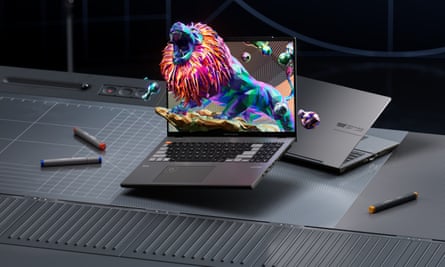
Asus’s Vivobook Pro laptop with a 3D screen hopes to succeed where 3D TVs failed – as no glasses required. Using an eye-tracking camera system and a lenticular lens built into the 16in OLED screen, the laptop can accurately display a different image for each eye giving the impression of 3D, including objects that jump out of the screen. It will play 3D movies and games but is most impressive with creative software, for which Asus has developed plugins to take advantage of the screen.
The laptop is expected be available later this year and joins rival devices from Acer and Sony in trying to make glass-free 3D computer screens a reality.
Lenovo’s dual-screen laptop
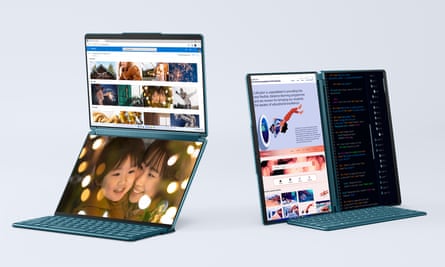
The latest Yoga Book from Lenovo replaces the keyboard deck of a traditional laptop with a second screen. The full-sized Windows 11 notebook has two 13.3in OLED displays hinged in the middle so that it can be used on a desk like a traditional laptop, propped up like a tent, read like a book or folded to be like a tablet.
A detachable keyboard and folding stand turn the Yoga Book 9i into a dual-screen workstation at a desk, too. The machine will cost $2,099 (£1,771.66) in the US and is expected to launch in June.
Samsung’s oven knows when your food is burning
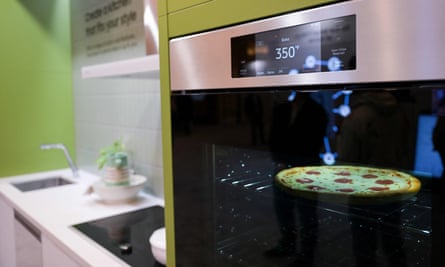
Samsung’s new Bespoke AI oven has a camera inside that can recognise food items, and using artificial intelligence it can not only automatically provide cooking recommendations for mode, temperature and time, but warns you if the food is about to burn.
It can spot 80 different ingredients and dishes and includes air sous vide, air-frying and steam-cooking modes alongside traditional oven functions. You can even use the camera to take photos of or livestream your culinary creations as they cook.
Pee-scanning toilet upgrade

Wearables are so last year. Made by the appropriately named health-tech firm Withings, the U-Scan is the first hands-free at-home urine lab, which promises to “provide an immediate snapshot of the body’s balance” using a 90mm round pod you hide under the toilet rim.
It tracks 100 biomarkers for monitoring menstrual cycles and hormone levels or hydration and nutrition using customisable cartridges, sending all the data to the Health Mate app. The device, due to launch by mid-2023, will cost £500, with cartridges lasting three months costing £30.
Satellites to solve out of phone signal emergency texts
Apple added the ability to use satellites to send SOS messages to the iPhone 14 late last year. Now the chip manufacturers Qualcomm and Mediatek are adding a similar ability to their top processors that could end up in high-priced Android phones from the second half of the year.
They promise two-way texting at some point in the future but how that will be built into phones and who pays for the service remains to be seen. Google and Samsung will have to be convinced to use Qualcomm’s rather than their own-brand chips in their top phones, too.